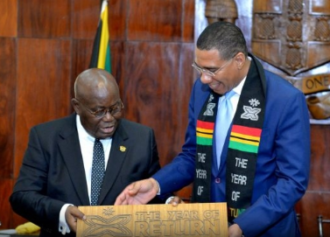Baragua looks like a typical town in rural Cuba. Its streets are lined with once-brightly-colored low-rise houses and crowded not with cars but with bicycles, horses and carts.
But listen closely to the locals and you notice the difference. Here, in the heart of Cuba, you hear English as well as Spanish spoken.
It is almost a century since hundreds of British West Indians headed for the island looking for work in the sugar industry. In those days, many firms, such as the Baragua Sugar Company, were run by Americans.
“They came expecting to earn a salary then go back to their country,” says 86-year-old Ethelbert Scantleberry, whose parents traveled to Baragua from Barbados in 1920.
For many other West Indian immigrants, their route to Cuba was via Central America, where they had worked on building the Panama Canal.
“They came looking for a better life,” says Scantleberry, whose parents, like many, ended up settling here and raising a large family.
Today their descendants are battling to keep old traditions alive.
The church of St. James still opens its doors on Sundays, the last of five houses of worship that once served the English-speaking population here.
But a full Mass is rarely celebrated now: The parish priest left Cuba years ago. Instead, an elderly deacon leads prayers for a handful of parishioners, most of them pensioners.
A tape recorder has replaced the once renowned church choir.
“The churches used to be full of people,” Scantleberry remembers, wistfully. “Not like today, with only a few of us here.”
Read more: BBC


